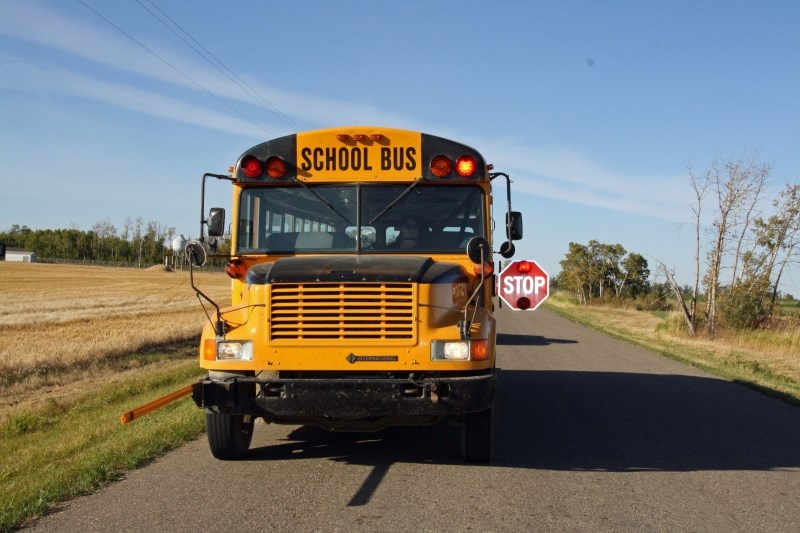ST. PAUL - As the price of fuel and other transportation costs continues to escalate, parents and guardians who send their kids on the school bus in rural areas of the St. Paul Education region will now have to pay a fee for the first time ever in the 2022/23 school year.
"This is the first time a general fee that applies to all riders has been charged," confirmed St. Paul Education Board Chair Heather Starosielski. "It has been discussed for the last three years during budget deliberations and declined, but really there were no other viable options," she noted.
On May 31, the St. Paul Education board of trustees approved its 2022-23 budget. The $56,957,535 budget is projecting a $1,093,027 deficit, which will be offset by reserves.
"The budget requires several assumptions as it attempts to forecast future events," reads a media release, sent out earlier in June. One of those assumptions is a return to pre-pandemic conditions. Another assumption is a challenge faced by many rural school boards in regards to declining enrolment.
For the next school year, the school division anticipates about 91 fewer students will attend its schools, which likely requires staffing adjustments.
"The Division is expecting some support to implement the new K-3 curriculum helping offset the cost of new resources and training. Some uncertainty remains around the cost of collective bargaining between teachers and the Province," reads the media release, outlining other challenges and unknowns.
Transportation costs on the rise
While transportation has seen an increase in provincial funding of 4.6 per cent, "extreme increases to insurance, fuel and equipment costs mean that this is not sufficient to cover rising costs," according to the school division - a sentiment that was echoed during the June 15 school board meeting.
"We just haven't been able to keep pace," said Starosielski, during Wednesday's meeting. "It's difficult to do... but our reality is what it is," she added, speaking to the introduction of busing fees for all riders.
The school division has "no choice" but to follow the lead of many other districts and introduce a base transportation fee for all riders - including those in rural areas. Effective Sept. 1, 2022, all riders will be charged a $50 base fee with a maximum of $150 per family. The $50 fee per student equals about $0.27 a day.
And even with the new fees, the transportation department is still expected to run a deficit. Transportation costs for the upcoming school year are being budgeted at $3.4 million.
"The division has run deficits in transportation for the last six years. We have been trying to find efficiencies wherever possible, but costs are going up faster than revenue," said Starosielski, when speaking with Lakeland This Week.
Bringing in fees for all riders will not be a "fix," said Starosielski, during Wednesday's meeting, but the board is hopeful it will help the situation.
While the new base fees are not going to be a popular decision, the ultimate goal is to protect the classroom.
"Our bus contractors are struggling with making ends meet and we are having a difficult time retaining and attracting new drivers and operators. The only option would be to take classroom dollars to subsidize transportation or consolidate routes and extend ride times that are already significant," explained Starosielski.
Registration for the next school year is now available online, and includes an application for busing that parents can fill out. Town of St. Paul in-town busing is done on a "first come first serve basis" and is subject to seat availability. The school division encourages early registration.
Instructor costs and staffing challenges
According to the budget, costs for instructors from Grade 1 to Grade 12 will likely exceed $40.2 million in 2022/23. In the 2021/22 budget, the cost of instructors for Grade 1 to Grade 12 was budgeted at nearly $41.8 million. The year prior the audited financials pegged Grade 1 to Grade 12 instructions costs at $42.8 million.
Speaking to challenging around staffing, Starosielski acknowledged that staff recruitment has become even more difficult.
"We have several positions advertised and we have noticed that we are having an increasingly harder time finding candidates," she said.
On Wednesday, Superintendent Glen Brodziak said administration is very much still in the midst of staffing for next year. On average, there are about 29 advertisements put out over April, May and early June, but this year there have been 70 ads. Many positions have even been re-advertised.
As for curriculum implementation for K-6 grades, the school division has been made aware that it will receive $72,000 specifically for teaching and learning resources. Administration is still working to determine how much of the funds each school will get.



